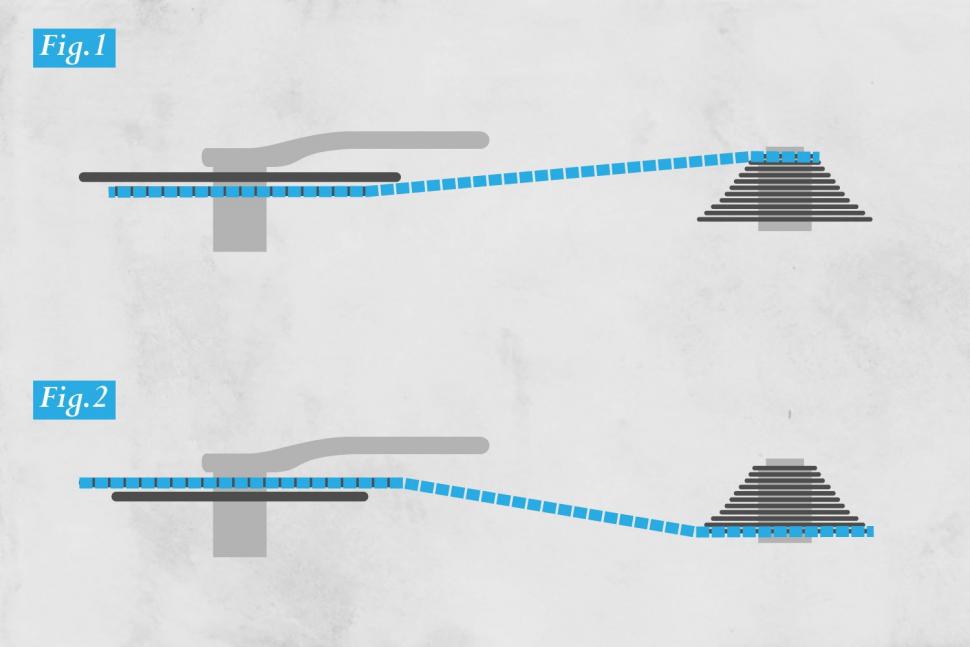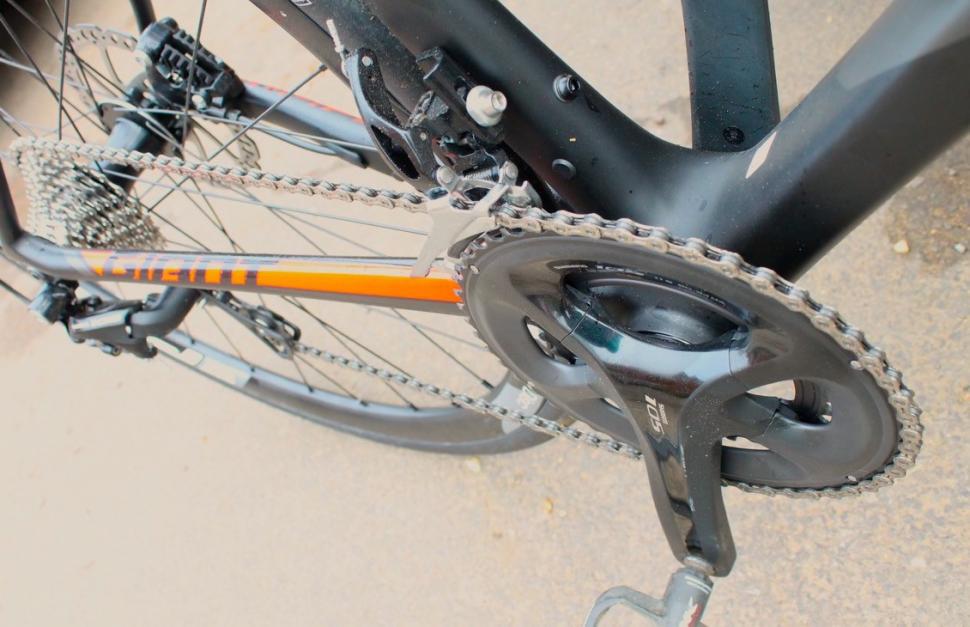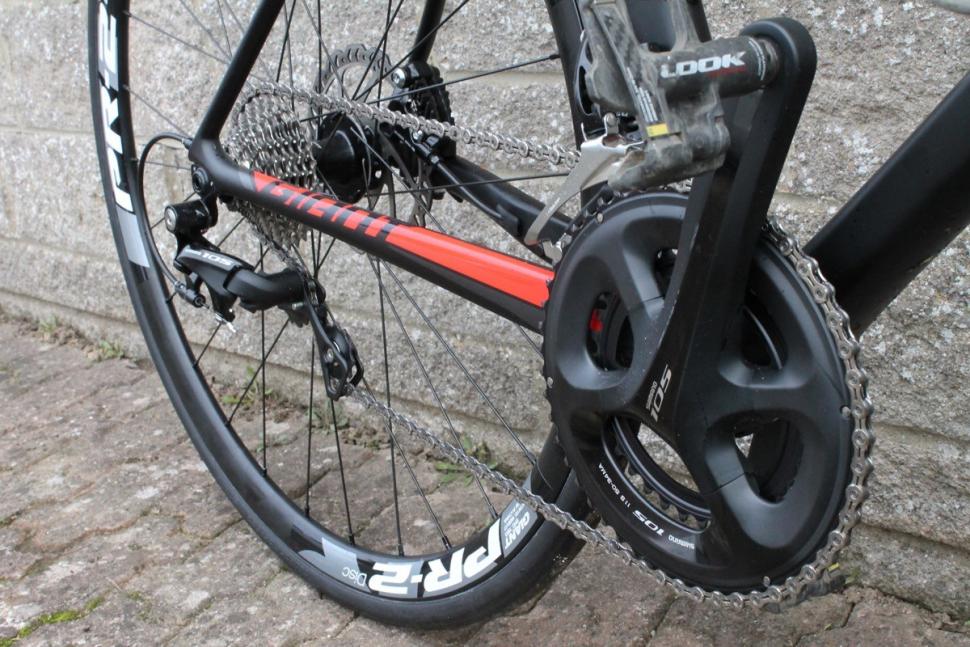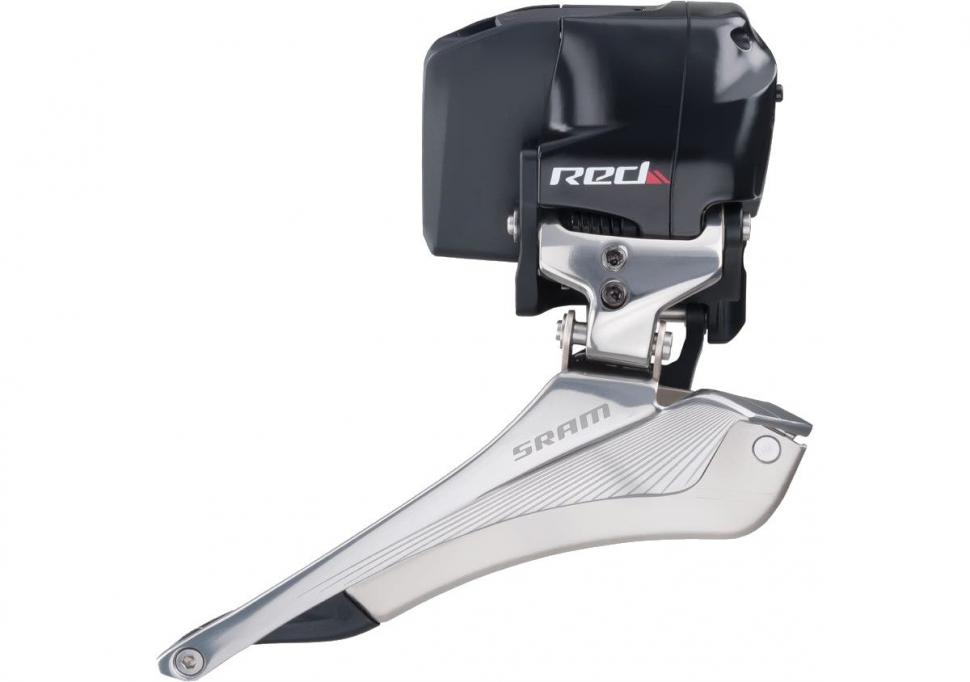- News
- Reviews
- Bikes
- Accessories
- Accessories - misc
- Computer mounts
- Bags
- Bar ends
- Bike bags & cases
- Bottle cages
- Bottles
- Cameras
- Car racks
- Child seats
- Computers
- Glasses
- GPS units
- Helmets
- Lights - front
- Lights - rear
- Lights - sets
- Locks
- Mirrors
- Mudguards
- Racks
- Pumps & CO2 inflators
- Puncture kits
- Reflectives
- Smart watches
- Stands and racks
- Trailers
- Clothing
- Components
- Bar tape & grips
- Bottom brackets
- Brake & gear cables
- Brake & STI levers
- Brake pads & spares
- Brakes
- Cassettes & freewheels
- Chains
- Chainsets & chainrings
- Derailleurs - front
- Derailleurs - rear
- Forks
- Gear levers & shifters
- Groupsets
- Handlebars & extensions
- Headsets
- Hubs
- Inner tubes
- Pedals
- Quick releases & skewers
- Saddles
- Seatposts
- Stems
- Wheels
- Tyres
- Health, fitness and nutrition
- Tools and workshop
- Miscellaneous
- Tubeless valves
- Buyers Guides
- Features
- Forum
- Recommends
- Podcast
feature
 crosschain.jpg
crosschain.jpgIs cross-chaining disastrous? Find out what the manufacturers say
Generations of cyclists have known that cross-chaining is A Bad Thing. It's one of those rules you get taught very early on. Ride with the chain on the small chainring (on the chainset, the component your pedals are attached to) and the smallest sprocket on the cassette (the cluster of cogs attached to the hub of the rear wheel) – as in fig 1 above – or on the large chainring and the largest sprocket – as in fig 2 – and anyone you're riding with is likely to alert you to the fact in seconds. People love to point it out.
But is cross-chaining really all that bad, or does it just get a bad rap? We asked some of the biggest component manufacturers for their views. You might be surprised at some of the things they said.
Read more: When should I replace my chain?
Shimano
The most efficient chain line occurs when the chain is running in a straight line. This minimises friction. When you run big-big you're pushing an uneven power transmission to the rollers, plates and bushings, especially at the points where the chain line alters (the points where the chain meets the sprocket and the chainring). This uneven load causes extra friction which increases the wear on the chain and longer term leads to less than optimum gear shifting.
For these reasons Shimano recommends avoiding extreme gear positions.
Ben Hillsdon, PR Officer, Shimano Europe
Shimano says you should avoid running the chain in this big-big combination (above).
Campagnolo
Cross-chaining is a practice to be avoided as it is less efficient than a straighter chainline (increased friction, less free motion of links etc).
We all might find ourselves cross-chaining during the heat of the battle during a race. However, we shouldn't make a habit out of it as there is generally a similar metric development gearing position available on a larger/smaller chainring.
Extreme chain crossing can add wear and tear on chainring and cassette teeth as the severe angle of the chain brings the external or internal part of the chain in direct contact with chainring/cassette teeth as opposed to a straight chainline which keeps friction to a minimum and limits contact to the rollers located on the axles of each chainlink.
Joshua Riddle, Press Manager, Campagnolo
Read our guide to understanding gears.
SRAM
At SRAM we love big-big. Amongst mechanics on the NORBA and Mountain Bike World Cup circuit (many years ago!), we called big-big the 'pro gear’, because professionals would ride it all the time, no matter what their mechanics told them. The same applies to pro road racers. They'll stay on the big ring as long as possible.
There are very good reasons to stay on the big chainring, even as far as the big sprocket:
• Chain management on rough terrain.
• Access to tallest gears without have to shift in front.
• Front shifts are slower than rear and much harder on the chain.
So we would encourage your readers to ride big-big if they like, as long as they don’t experience chain rasp on the front derailleur cage. SRAM 2x11 drivetrains, specifically the Yaw front derailleurs, are designed to accommodate this.
Very little efficiency is lost when cross-chaining. And in the case of big-big, minuscule efficiencies lost to cross-chaining are offset by efficiency gained because of larger bend radii for the chain. Better chain management and easier access to tall gears certainly outweigh any efficiency loss.
A few words on efficiency measurements. There are enormous differences between the efficiency measured on a loaded drivetrain and an unloaded drivetrain (what your hand feels when spinning the crank on a bike in a workstand). The sluggishness that cross chaining sometimes appears to cause on a bike in the stand disappears when the drivetrain is under load. It’s analogous to lubes in loaded and unloaded mechanical systems. Light oil generally feels better than heavy grease when a system is worked by hand, but when the system is loaded the heavier lube will be more efficient.
Similarly, cross-chaining is not a concern for premature component wear unless of course your chain is wearing through your front derailleur.
JP McCarthy, Road Product Manager, SRAM
Check out our beginner's guide to groupsets here.
FSA
In the last decade cross-chaining has become increasingly common with many people running the chain in the big chainring and big sprocket, especially with the advent of electronics which is much more permissive regarding cross-chaining.
This means that today's chains are subjected to much higher stresses than in the past. That’s why we decided to invest in the development of much stronger chains.
We have a stable supply of raw materials allowing us always to offer a product with a very high level of reliability and performance.
Here at FSA we understand well the importance of cross-chaining. Our latest introduction in this field is the 48/32 Adventure chainset. This is a new super compact standard that allows combination like 48/21 – 48/18. It’s a possible solution to avoid crossing because the chain works more linearly.
We will have this new range of chainsets available in 2017, from the carbon SL-K to our entry level Vero Pro.
Maurizio Bellin, General Manager, FSA
There's a range of views from the big brands, then; what do you think? Is cross-chaining perfectly acceptable? Or do you avoid it because of greater inefficiency and component wear and a higher chance of dropping your chain? Let us know your thoughts and experiences.
Mat has been in cycling media since 1996, on titles including BikeRadar, Total Bike, Total Mountain Bike, What Mountain Bike and Mountain Biking UK, and he has been editor of 220 Triathlon and Cycling Plus. Mat has been road.cc technical editor for over a decade, testing bikes, fettling the latest kit, and trying out the most up-to-the-minute clothing. He has won his category in Ironman UK 70.3 and finished on the podium in both marathons he has run. Mat is a Cambridge graduate who did a post-grad in magazine journalism, and he is a winner of the Cycling Media Award for Specialist Online Writer. Now over 50, he's riding road and gravel bikes most days for fun and fitness rather than training for competitions.
Latest Comments
- quiff 1 sec ago
Even before you get on to the myriad other competing things, headlights are not actually mandatory where there is street lighting. I don't know if...
- brooksby 44 min 44 sec ago
You mean that they are Otherwise Law-Abiding™ ?
- brooksby 56 min 14 sec ago
And finally: I wonder how many of the "more than 3,000" signatures on that petition are actually locals, who live or work there (and are not just...
- Doug_D 2 hours 31 min ago
Another book suggestion - I can highly recommend "Lost Summers and Half-Forgotten Afternoons: A Mint Sauce collection" - a beautifully presented...
- chrisonabike 3 hours 44 min ago
But... the last is only not the case with drivers on normal roads because driving on the cycle path / footway / rolling a vehicle up there is seen...
- mdavidford 4 hours 22 min ago
I think you're missing an opportunity to pack even more tech into it - add accelerometers that can detect whether they're pedalling or stepping....
- chrisonabike 4 hours 47 min ago
Thanks. I guess the question is "need". If the road is busy, it sounds like it is a desired route between places? In which case (given this an...
- mdavidford 4 hours 55 min ago
Don't know what you mean. I thought my suggestion was entirely practical.
- Rapha Nadal 5 hours 29 min ago
I'd buy a motorbike fo rthat kind of money!





Add new comment
145 comments
xtr drivetrain, 3x9, top end sram chain, small amount of noise near the extremes, more at the extremes, noise bad. No noise good.
Exactly...
Other people can cross chain if they want, I don't care. But it puts additional stresses on everything and wears everything out faster and there's no need if you use your gears properly.
Exactly!
None of them answered about small-small. Commuting gear of choice as it allows me to easily down-shift for slowing traffic, and I rarely get up to big-ring speeds through Aberdeen rush hour. I realise there is an added complication of gemoetric clearance to avoid catching the big-ring as well as avoiding deraillleur interference but is there any other good reason not to?
PS Matters of personal taste because you don't like it are not a good reason.
Not wrong, I'm always seeing people riding in small-small on the way to work. Usually cheap bikes, Sora etc, too lazy or ignorant to change gears I think, once they've gone all the way down with spring assistance front and back.
I didn't realise anyone did it deliberately! I'll watch more closely.
The cassette sprockets with fewer teeth will wear out faster so you might have to change your cassette more frequently than if you shifted to the big ring and used bigger sprockets.
Assuming you have a compact (you didn't say), you could consider putting on a bigger inner-ring to give yourself a more usable range of sprockets at the rear for commuting, or a road double chainset.
i guess Shimano’s answer would be REALLY don’t do small-small. The latest di2 iterations do not allow you to do it. In fact it’s a bit of a con to say 8050/9150 is 22 gears, they are only 19
i guess Shimano’s answer would be REALLY don’t do small-small. The latest di2 iterations do not allow you to do it. In fact it’s a bit of a con to say 8050/9150 is 22 gears, they are only 19
[/quote]
Telling also that SRAM has always called their 11 x 2 "True 22".
Thats not correct. You just go into E-TUBE software and set up how you want - all 22 combinations if you want, or you can set it to prevent cross chaining. Your choice.
PP
I see a trend to undermine the long-liveness transmission of a bike.
Very narrow chains (for >8 gears), thin gears, single front chainring, and now cross chaining.
Less reliable is good for the producer, because it means you buy more stuff just for the maintenance of the bike.
That's why I stopped to 8 gears, and would never use less than 2 front chainring. It also means my chain works on most non-pro bikes and any shops stocks it.
Sometimes when you have perfection, you look for any reason to run away for it just because you want "innovation", when in fact you are going backward.
My rule for my Di2+SRAM Red setup; small-small makes a racket so don't use that; big-big doesn't make a racket so that's fine; don't sprint in big-big as it doesn't seem to like that but hills are fine. I don't do it deliberately but neither do I panic and switch the front derailleur part-way up a misjudged hill which - due to the force Di2 can apply - is probably far worse. Almost 10,000km on the same cassette now and it looks alright. Chains are lasting me about 5,000km. No busted hangers
Nonissue for most modern 11 speeds I bet.
No gentleman of breeding would be caught cross chaining. I say it is symptomatic of the general decline in the standards of modern society.
As someone who organises cycling events I'm constantly warning riders about cross chaining. It may not be bad for the gears etc but a lot of frames have lightweight frame hangers. I've seen six examples of this at events this year. Sometimes it's a straight break, others it puts the mech through the chainstay or into the wheel. Speak to any carbon frame repairers and they can back this up.
AL
While this is potentially a simplistic view, I've always thought that wear would only occur when parts are moving past each other. Therefore, the wear on a chain would occur when the angle between successive links changes (around the jockey wheels, at the start and end of contact of the chain with the chain rings and sprockets). When cross-chaining, the chain appears to bend laterally after it has left the sprocket at before it reaches the chainring, which would imply that the efficiency wouldn't change much. This theory also explains why big-big is more efficient (each link on the chain doesn't have to bend through such a large angle at the chainring and sprocket), but it doesn't take into account the fact that there could be more stress on the chain which could increase the risk of breakage.
I like SRAM's response so much - they've scored big PR points on me there.
No idea how accurate it is, but it's massively in tune with my riding. For my next groupset, they can Take My Money.
Of course when they are pushing 1x12 systems its not in their interest to suggest that a cog offset is a problem.
That said I'm a 1x convert so I don't disagree.
Given the latest MTB fashion of 1x12 it seems to be positively encouraged these days (which may help explain Sram's views above).
Bit different, as 1x12 chain line wise is the equivilent of riding everywhere on the middle ring of a triple.
I *do* ride everywhere on the middle ring of a triple!
I'd say, it depends, if i'm on undulating terrain, for example, about to crest a hill, and powering along quite nicely, then i'll keep in in Big-Big to get over the top of the hill. I don't do it all the time, rather to keep momentum up.
So the older companies say 'no, don't do it' and the younger companies go with 'it happens, it's our job to make sure it's not a problem'
Seems to be the case, I do Cross Chain with a SRAM Yaw mech, its never given me cause for concern or any noise, you know in the back of your mind its meant to be bad but it works flawlessly for me.
Maybe the older companies aren't only trying to sell you more stuff when chains/sprockets/chainrings run out. Maybe they feel some responsibility towards educating riders rather than just taking their money.
Dirty crosschainer here. Since I stuck a 32t on I'm always at it. It's easier to crosschain for small hills. Anything steepish I have to settle into I'll try and get it setup properly but quick bursts I'll just crosschain.
Anyone who's pointing out your crosschaing whilst riding need to look where they're going instead.
I cross chain 53-29 all the time, can't say I ever intentionally 39-12 though. Doesn't seem to have done any damage to my Campag Record (10s) but maybe 11s is a bit more fragile. For me the little ring is just too much spinning, feels like I am wasting energy. From working in bike shops for a while it also seemed to depend a lot on how long your rear stays are - short stays really seemed to result in some bad angles.
Pages